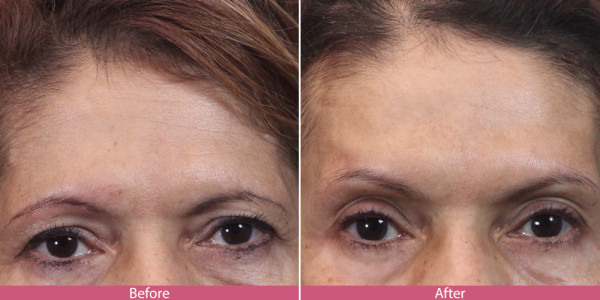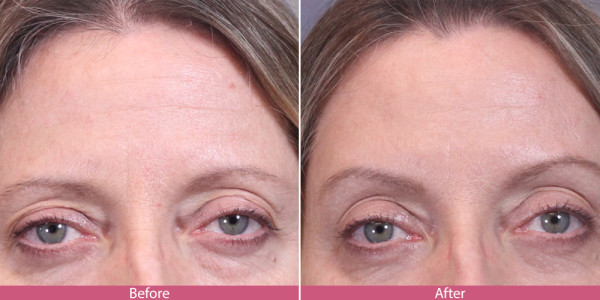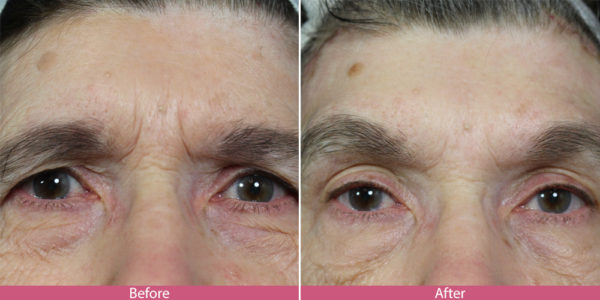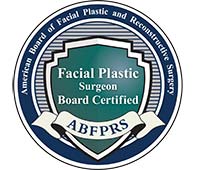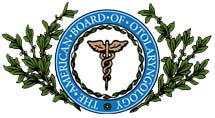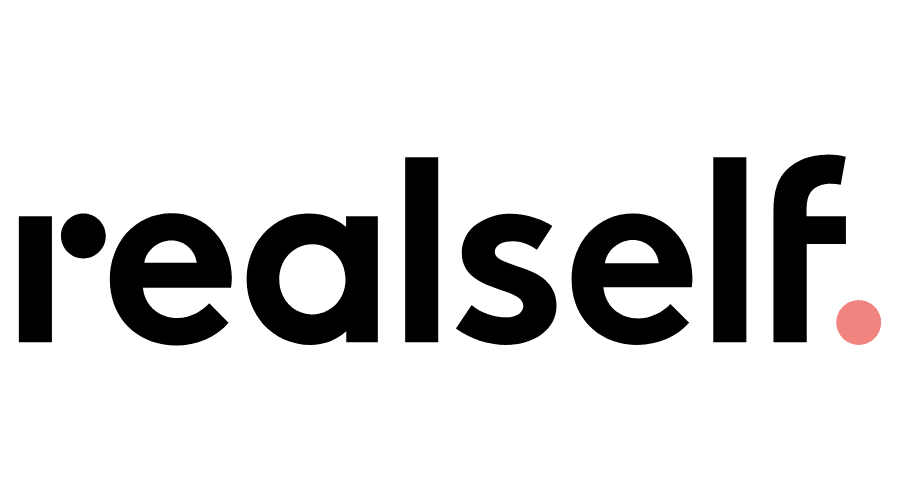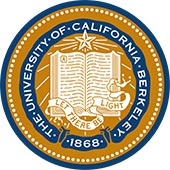Getting rid of that angry, tired look!
Real Patient Photos*
A Few Reasons to Choose Facial Beauty
Low Risk Procedures
Every procedure requires some for of anesthesia and traditionally this is a General Anesthesia, meaning you are completely knocked out. At Facial Beauty, we utilize cutting-edge local anesthesia procedures where you are not fully knocked out but completely comfortable. The advantage of Local Anesthesia that there are less complications & faster recovery time. Our procedures generally take from an hour and thirty minutes to no more than three hours, allowing us to dramatically reduce any risk involved in the procedure.
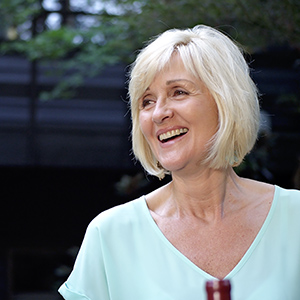

Limited Downtime
The biggest drawback to major facial surgery is the downtime. While recovery time can vary case by case, generally patients can return to work between seven to ten days after the procedure. We do everything we can for our patients to get you back to your family and back to your daily life of activity & exercise as soon as possible.
Simple & Affordable Financing
At Facial Beauty, we offer low monthly payment plans and pre-qualifications for any additional treatments, affordability has never been easier. If you’ve ever let financing stand in your way of a new you, come talk to us about options you may not know you had. We can even do pre-approvals over the phone so please feel free to contact us anytime.
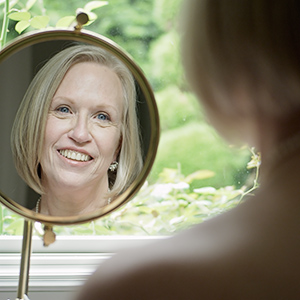
Frequently Asked Questions
What does the procedure involve?
- Local anesthesia.
- Oral sedation.
- Specialized and Expert Facial Rejuvenation Surgeon.
- Different techniques performed based on needs of the patient (endoscopic brow lift, direct browlift, trans-blepharoplasty incision browlift, pre-hairline approach brow lift).
- Correct aging-related droopy eyebrow.
- Correct aging-related upper eyelid lax and redundant eyelid skin
What are the typical underlying problems?
- Aging-related increased laxity of eyebrow
- Eyebrow droopiness with overhang.
- Particular droopiness of lateral one-third of brow with downward sloping.
- Occasional vision loss related to eyebrow droopiness.
- Aging-related upper eyelid lax and redundant eyelid skin worsened by brow sagging.
- Sun-damaged related skin thinning, aging, and wrinkling.
- Horizontal forehead wrinkles caused by constant need to elevate the eyebrows to improve blocked vision.
What are the different types of Brow Lift procedures?
- Endoscopic brow lift: small incisions are placed in the hair-bearing region above the hairline, and elevation of the forehead with repositioning of the brow utilizing endoscopes to identify brow structures, including neurovascular structures; release of tethering fascia and ligaments, elevation of the brow to a higher position, which repositions to a more aesthetically pleasing position.
- Subcutaneous browpexy: small incisions are made just above the hairline. Direct elevation of the lateral one-third of the brow is performed with direct suture “pexy” of brow.
- Trans-blepharoplasty brow lift: Through an upper eyelid crease incision, oftentimes during upper blepharoplasty, the brow is directly elevated and repositioned with suture support technique.
- Direct brow lift: For men with male pattern baldness- a direct incision in a forehead crease is performed and the brow is directly elevated.
What type of anesthesia do you use?
- Commonly performed under local anesthesia with mild oral sedation.
- IV sedation or general anesthesia with local anesthesia in selected instances.
What is a typical recovery time?
- Socially acceptable with makeup by 5-7 days.
- Return to work on a case-by-case basis, generally after 5- 7 days post-operative.
- Resume normal exertional activity, aerobics, and jogging, after two weeks.
What is the recovery like?
- Limited need for pain medication.
- Functional at home the day after the procedure.
- Several days with forehead wrap in place.
- Bruising and swelling typically last up to seven days.
- Full exertional activity (aerobics, jogging) after two weeks.
- Socially acceptable generally by 5-7 days with makeup.
- Makeup can be applied after 7 days to hide the bruising.
What can I do to help my recovery?
- Cold compresses to the eye and forehead areas for up to 48 hours.
- No exertional activity. No lifting, jogging, or running for two weeks.
- Head of bed elevation during the day or during sleep at 30-degree angle for up to two weeks.
- No aspirin or ibuprofen related products.
- Take prescribed medications according to the directions provided.
What factors have worsened the aging eye and brow changes?
- Advancing age.
- Familial genetic predisposition of moderate baggy eyebrow.
- Hormonal factors, chronic sinusitis, chronic allergies.
- Poorly controlled medical conditions (i.e. diabetes, cardiac disease)
- Extensive stress (i.e. divorce)
- Moderate past sun exposure.
- Long time smoking history
Are there any procedures typically performed along with a brow lift?
- Upper blepharoplasty.
- Lower blepharoplasty.
- Natural lift, minilift
- Fat grafting or fat injection or fat eyelid repositioning.
- Full face laser resurfacing with fractionated CO2 laser.
What are typical motivations for a brow lift?
- Tired, concerned, angry, or worried appearance.
- Individuals motivated to look their best.
- Dissatisfied with overall aging appearance, particularly to the forehead.
- Aged upper face/forehead.
- Inability to see the upper eyelid.
- Difficulty putting upper eyelid makeup on.
- Baggy eyelid skin or droopy upper eyelids.
- Unsatisfactory appearance when looking in the mirror.
- Overall tired look, tired appearing eyes.
- Decreased visual fields (decreased lateral and upper vision)
- Difficulty applying eye makeup
Who are good candidates?
- Individuals motivated to look their best.
- Individuals dissatisfied with their appearance of looking older than they feel.
- Individuals concerned about their overall appearance of their forehead and eyes.
- Healthy individuals.
- Individuals motivated to feel their best about themselves.
- Individuals frustrated by the changes that have occurred to the forehead and its effect on the eyes, particularly past the age of 40.
How old are most patients?
- Over 40
How experienced are the surgeons?
- Board-certified Facial Plastic and Reconstructive Surgeon.
- Double board-certified (Otolaryngology-Head and Neck Surgery)
- Expert Facial Plastic Surgeon who performs over 50-100 brow lifts a year.
Are there any reasons why I should not have a brow lift?
- Mild to moderate cardiac or pulmonary disease.
- Other significant medical illness.
- Chronic anticoagulation.
- Severe dry eyes
- Underlying eyelid malposition
- Significantly lax and week lower eyelids.
- Active thyroid disease
- Caution with male pattern baldness.
Routine post-operative instructions?
- Cold compresses to the forehead area for 48 hours.
- Forehead wrap for 7 days.
- No exertional activity. No lifting, jogging, or running.
- Head of bed elevation during sleep at 30-degree angle for two weeks.
- Take prescribed medications according to directions.
- No aspirin or ibuprofen related products; no blood thinning medications for 1-2 weeks after the procedure.
- Apply ointment to the wound sites daily.
A message about brow lifts from Dr. Santos:
Like everything else, the brow too will show the signs of aging. Specifically, there is an overall tendency for things to “go south.” What this means for the forehead and brow area is that the brow descends over the orbital rim or the eye socket, vertical lines form in the forehead, and an overall appearance of aging manifests. This makes sense; why should things only go south in the chest, abdomen, and lower face? The truth is that the brow also sags, and we all can lose the overall appearance of youthfulness and pleasantness with this time-related change. The result is that there can be an angry, tired, worn, fatigued, aged, and worried appearance. You can touch your lateral eyebrow with your fingers and see what its relationship with the bony orbital rim suggests. Naturally, in its aesthetically pleasing position, the eyebrow will reside several millimeters above the bony rim for woman, and with men it will be just above or at the bony rim. However, with time, this relationship will change and the eyebrow will descend, particularly the lateral onethird of the eyebrow, which aesthetically resides in a higher position than the medial two-thirds of the brow. The brow can become relatively flat, rather than peaking laterally. With time and after sagging and descending, the droopy eyebrow will develop an overall appearance of aging, angriness, and a wearied and concerned appearance. Many individuals who come in for aesthetic rejuvenation of the eye area will have brow sagging (ptosis), and often will lament that they are oftentimes told that they look angry, or tired. When looking into the mirror, one will see sagging, and a tired appearance, but sometimes it is difficult to identify the reason-when focusing on the lateral “hooded” brow area, one can see the problem.
The brow lift specifically addresses the aging of the eyebrow and the lateral descend of the eyebrow by repositioning the lateral brow higher to a more aesthetically pleasing and more rejuvenated position. The eyes will appear more open and alive! The angry and sad appearance is softened.
Sincerely,
Dr. David Santos

David Santos MD, FACS
Dr David Santos was the Medical Director for Lifestyle Lift, responsible for hundreds of facelift surgeons and thousands of procedures. Having performed over 4,000 facelift procedures himself, Dr. Santos is committed to finding cutting edge techniques to reduce the risk and minimize the downtime of facelift procedures.
- Member American Board of Facial Plastic and Reconstructive Surgery
- Member American Board of Otolarnyngology – Head and Neck Surgery
- Member American Academy of Facial Plastic and Reconstructive Surgery

